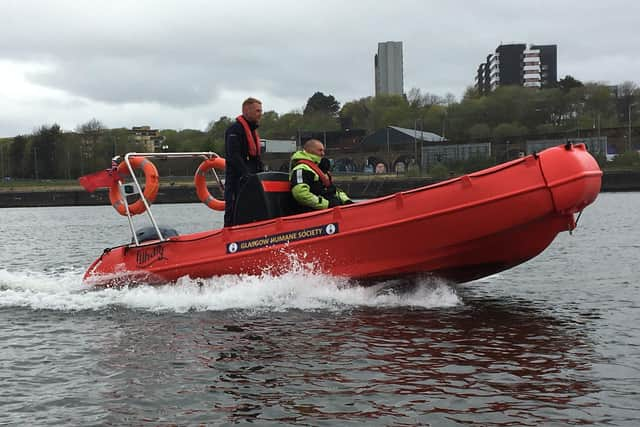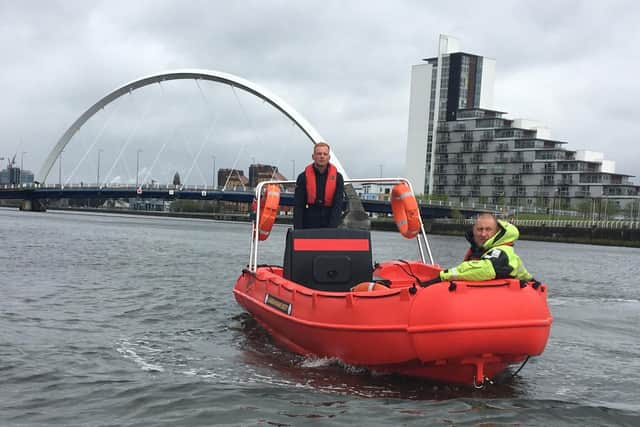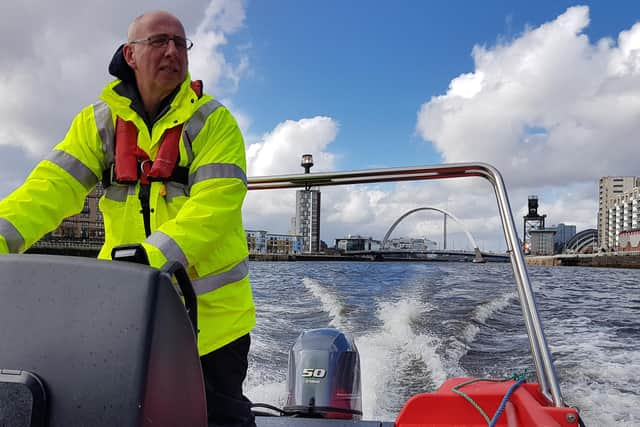Glasgow Humane Society launches new boat to improve world’s oldest life-saving body’s search and recovery of missing people on Clyde
Glasgow Humane Society, which was established in 1790, said the £20,000 vessel would dramatically improve its operations on the river, including being able to withstand much rougher weather conditions than its predecessor.
The boat, to be named Lede, is fitted with GPS equipment to mark the location of submerged objects and has a drop-down bow to assist with recoveries.
Advertisement
Hide AdAdvertisement
Hide AdSociety vice-chairman Gordon Goldie, who joined the body after it recovered his missing 18-year-old daughter Sarah’s body from the river five years ago, said it performed a vital service.


He said: "You can't accept what has happened until you get closure and we couldn't get closure until Sarah was brought home.
"An hour was like a day and a day like a week at that time, and in the end the wait for us was four weeks.
"When she was returned to us it was a great feeling of relief and we couldn't have been more grateful to the charity.
"Lede will dramatically improve how the society does this job for families facing the same tragic circumstances as we did.”


The boat will be named after a bomb-sniffer dog owned by the society’s officer, William Graham.
Mr Graham adopted the black Labrador when he left the Army after they served together in Afghanistan, and worked on the river until he died last year.
He said: "It's very important to be able to help search for someone and return them to their family, and this new boat is a step change in how we do that.”
Advertisement
Hide AdAdvertisement
Hide AdMr Graham said the Whaly 500 vessel was much larger, more stable and powerful than the boat it replaced.


He said: "The last boat was fibreglass and if we hit something, it broke and there was a danger you could sink.
“This one is much tougher – it is built for robustness and size and is a real game changer.
"There has been a rise in attempted suicides and things have been a lot busier during the lockdowns, which have been playing on people’s mental health.
"One man had lost his job and had no money, while a woman had had her children taken into care.”


Mr Graham said the boat would be on the river daily, also recovering lifebelts thrown in by vandals and carrying out safety training.
But he said it was no longer involved in rescues, which are now handled by other agencies such as the Scottish Fire and Rescue Service.
Lede will be based at Kelvin Harbour, beside the Tall Ship Glenlee at the Riverside Museum, and operate between the tidal weir at the eastern edge of the city centre as far downstream the Renfrew-Yoker Ferry.
Advertisement
Hide AdAdvertisement
Hide AdThe boat will be named today by Glasgow Lord Provost Philip Braat, who is also the society’s honorary president, by pouring a quaich of malt whisky over her bows.
The society uses rowing boats on the Clyde above the weir.
It was established because people who went to the aid of those attempting to take their own lives could be classed as accessories to the-then crime of suicide.
A message from the Editor:
Thank you for reading this article. We're more reliant on your support than ever as the shift in consumer habits brought about by coronavirus impacts our advertisers.
If you haven't already, please consider supporting our trusted, fact-checked journalism by taking out a digital subscription.
Comments
Want to join the conversation? Please or to comment on this article.
